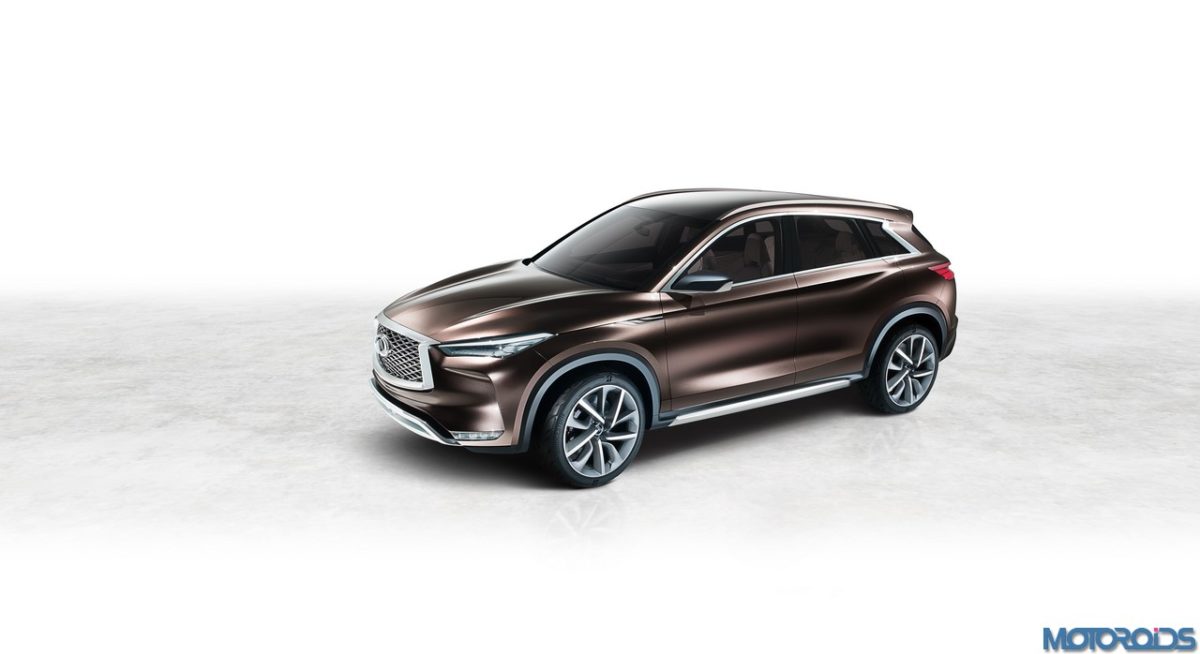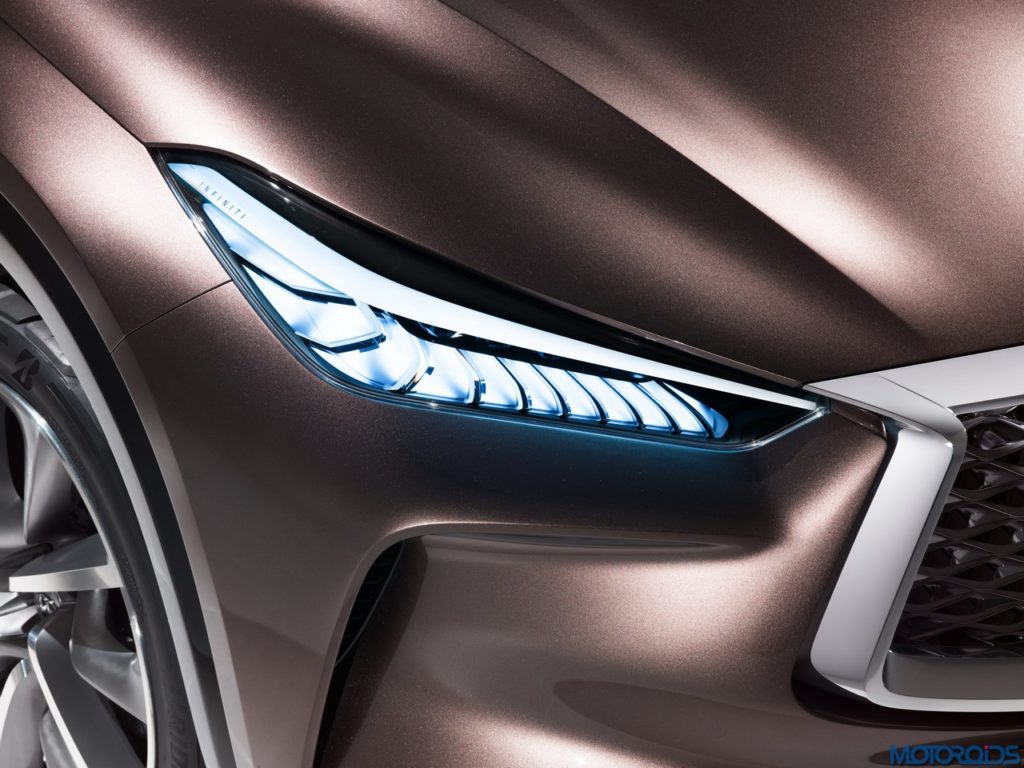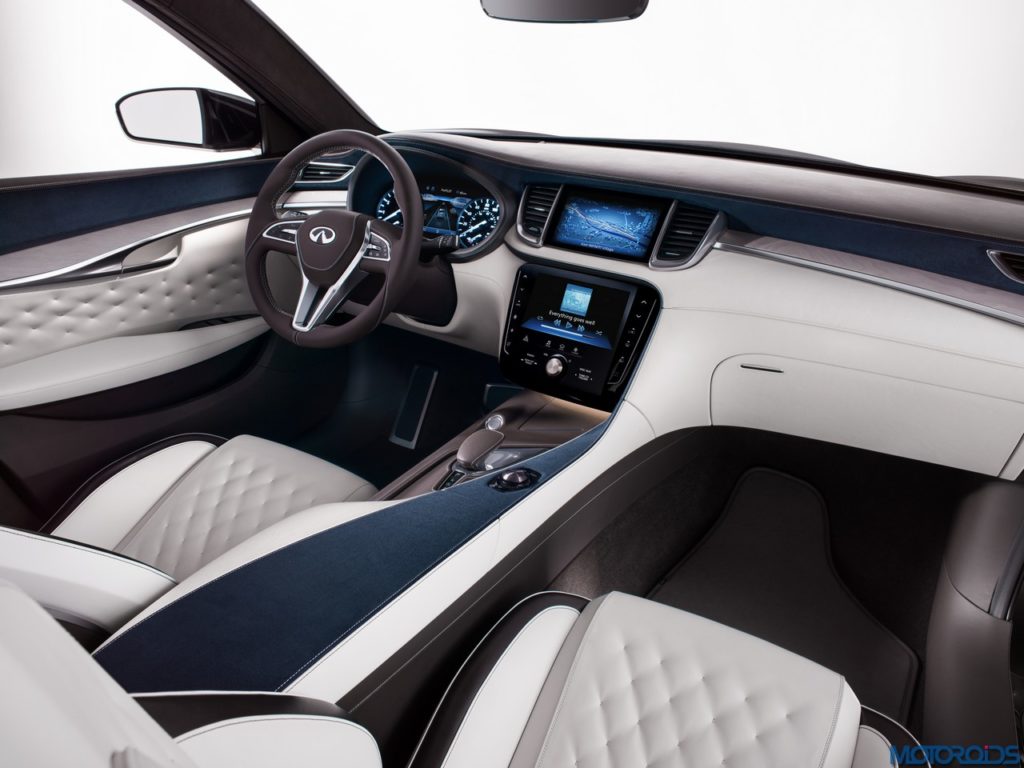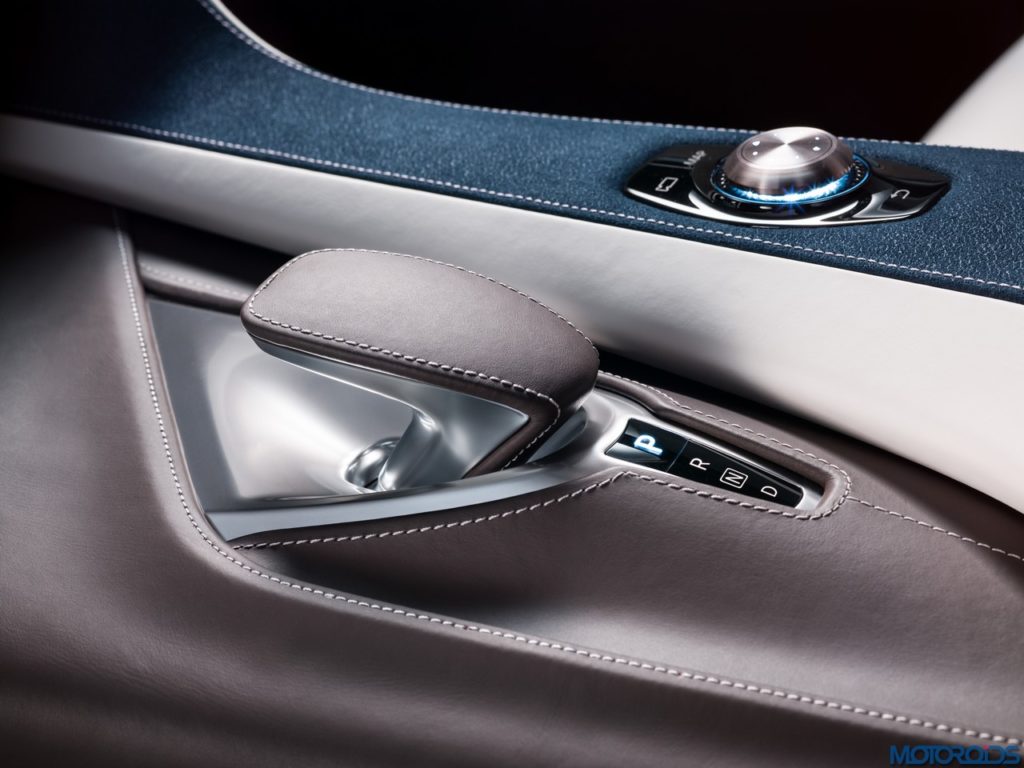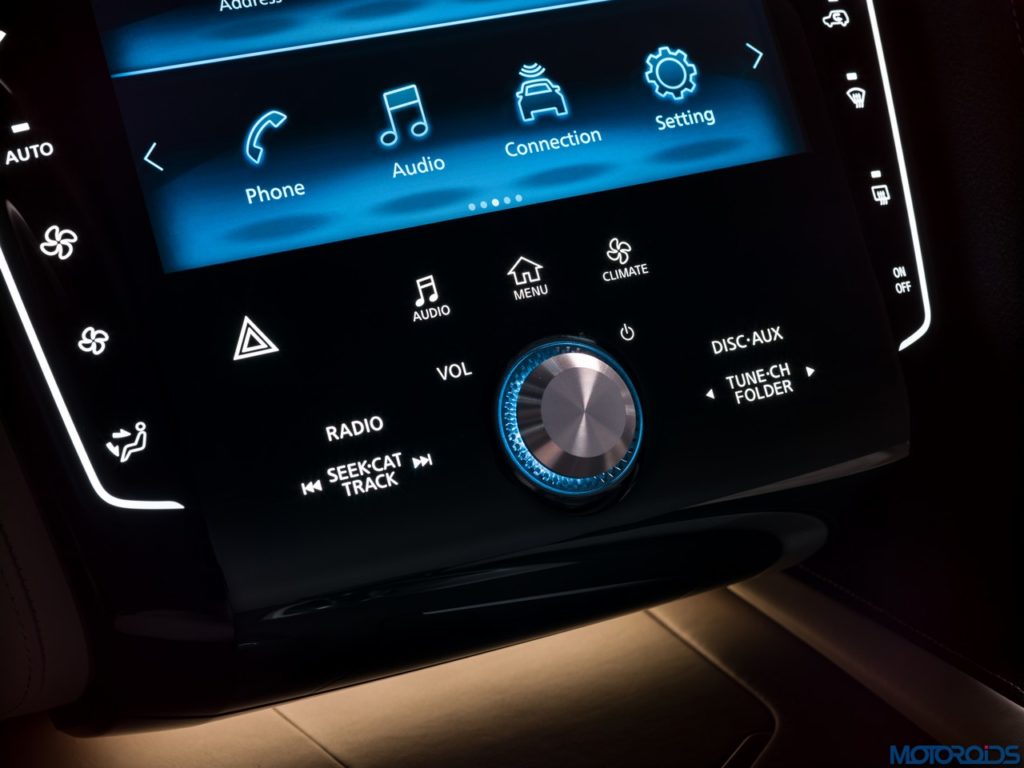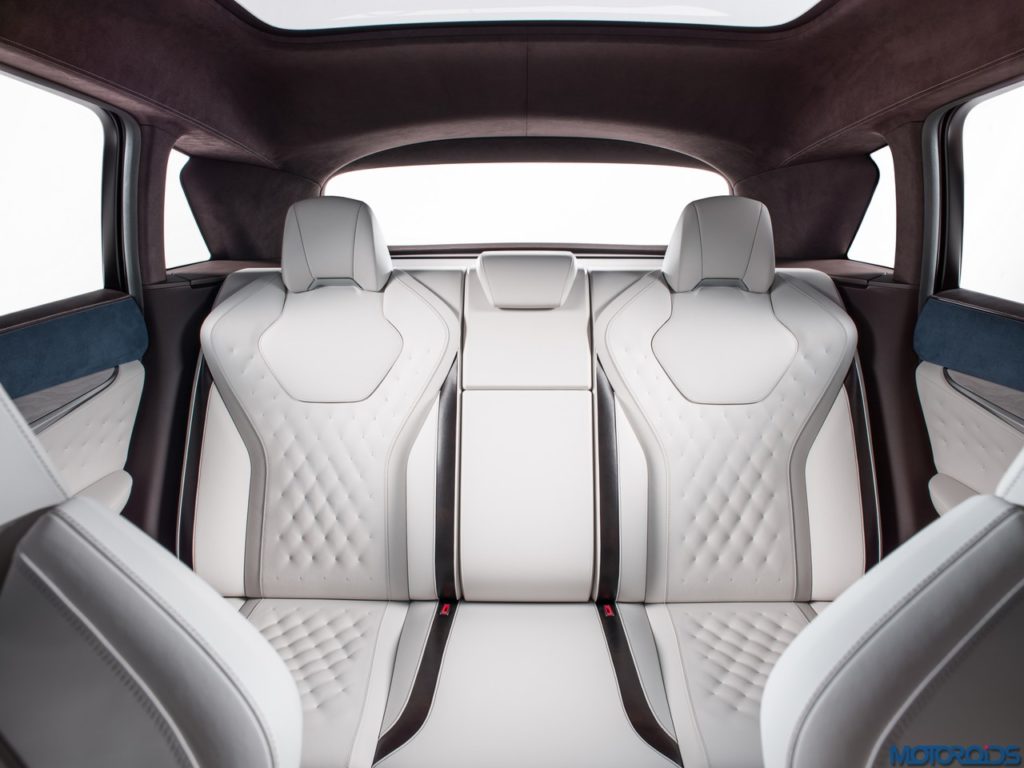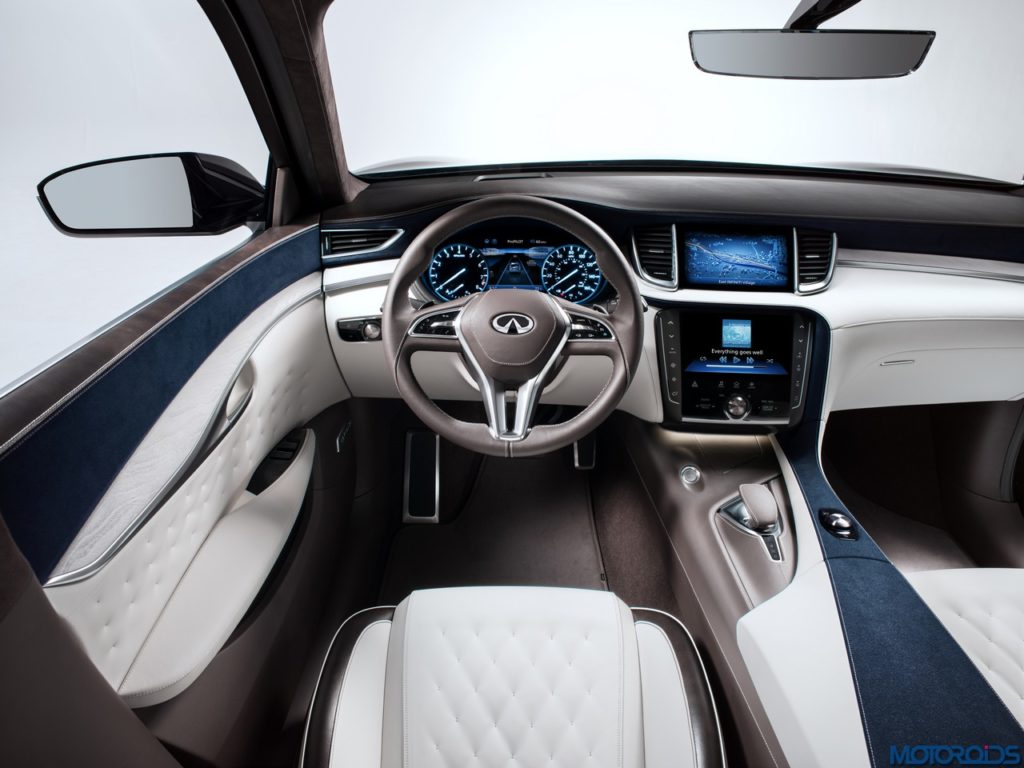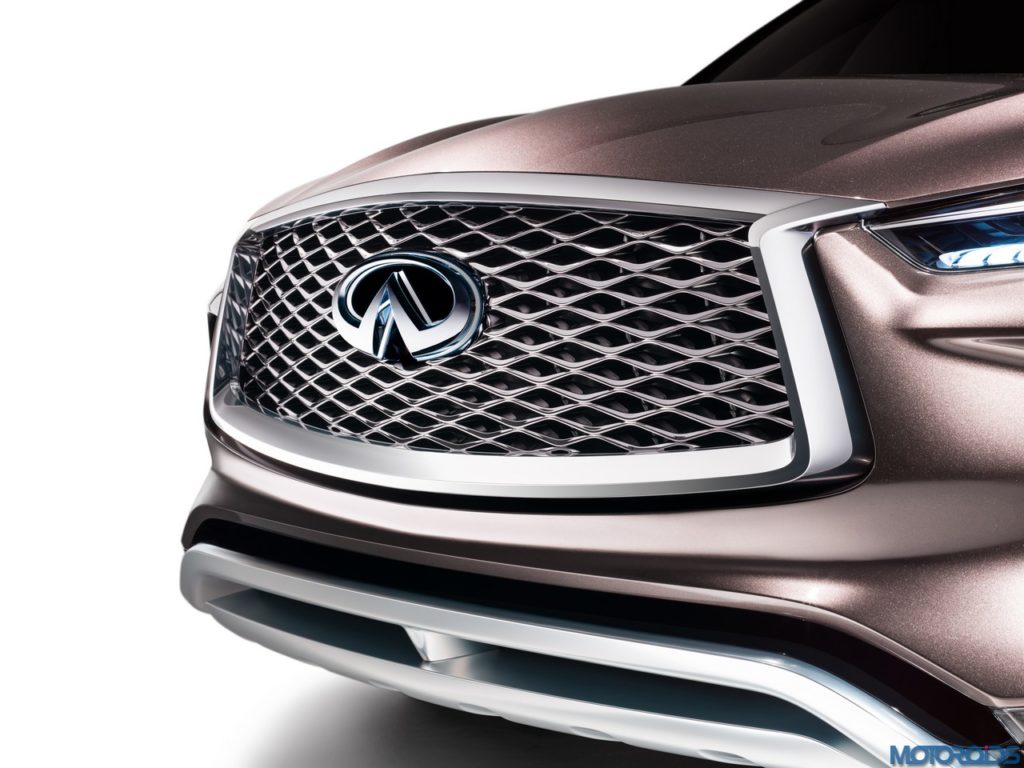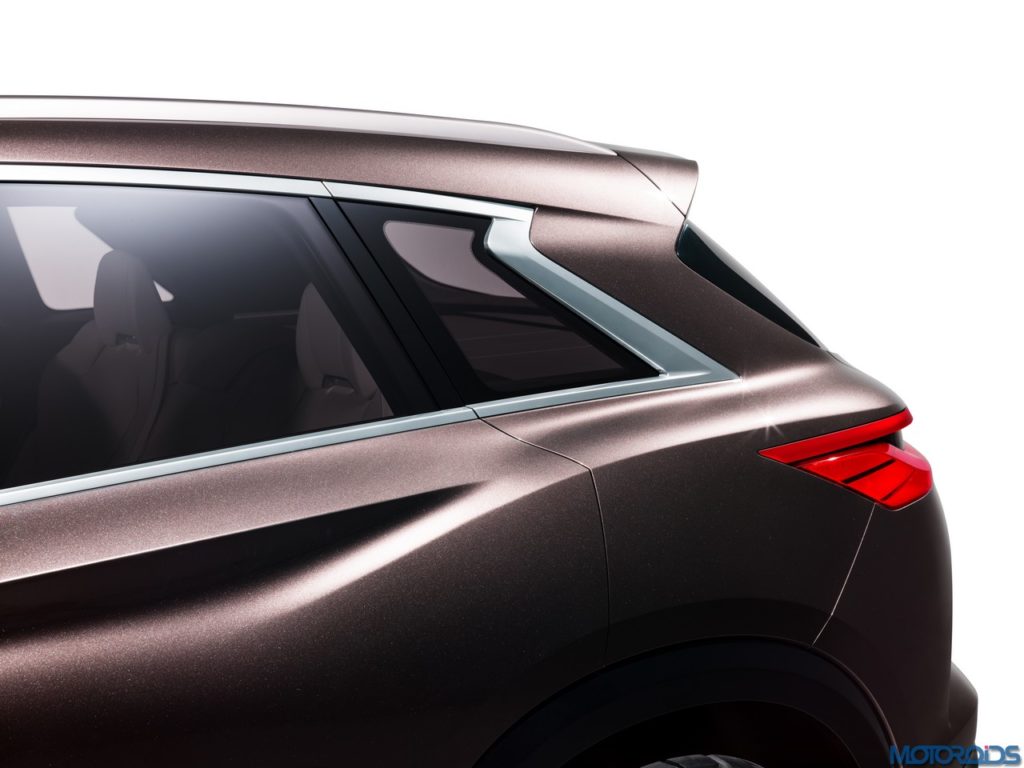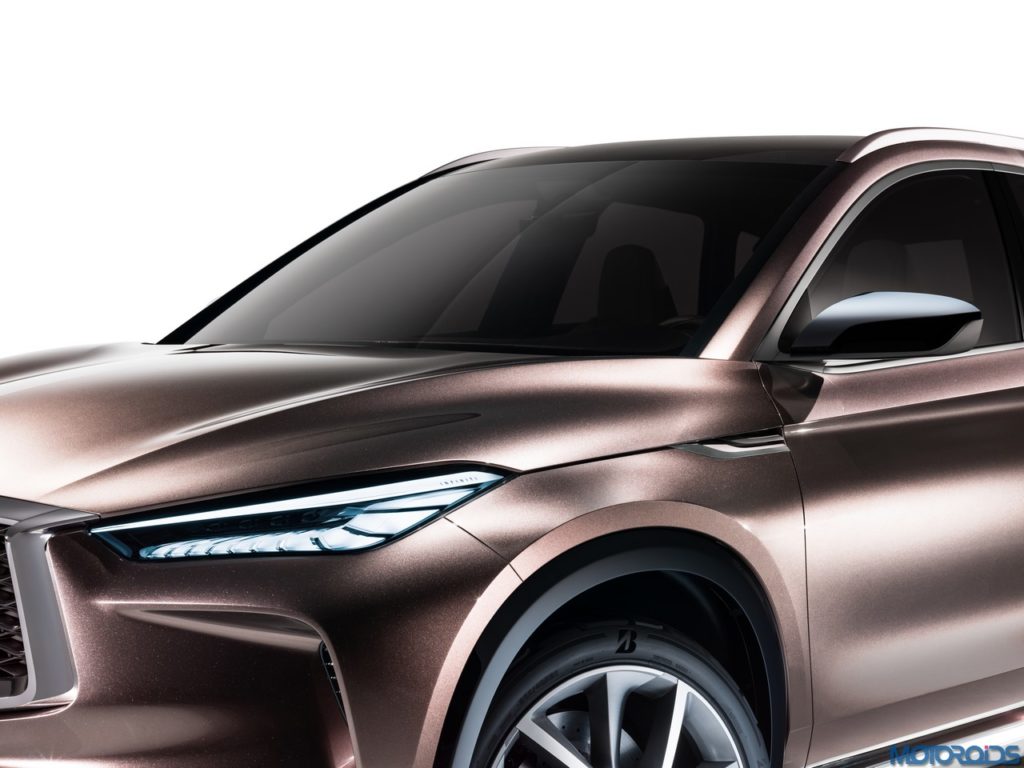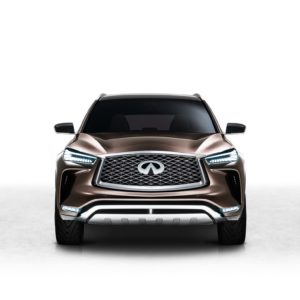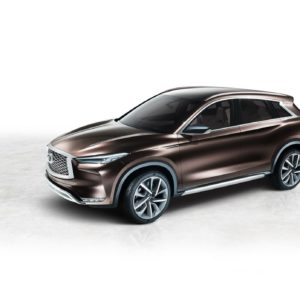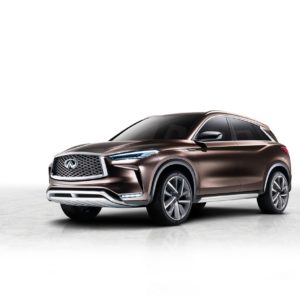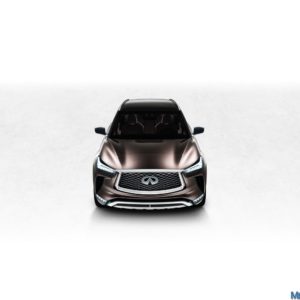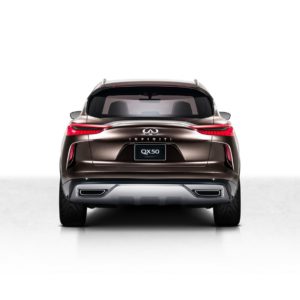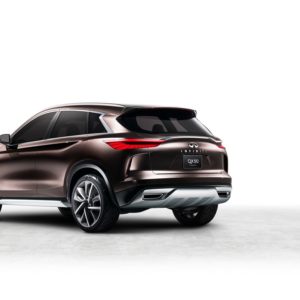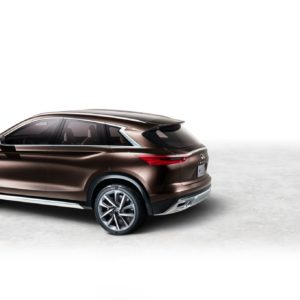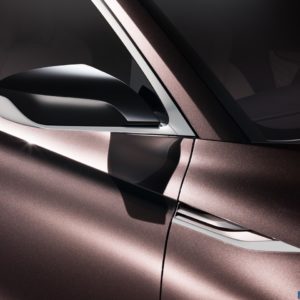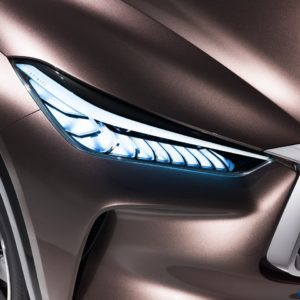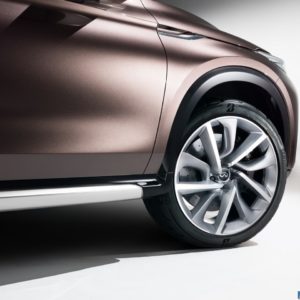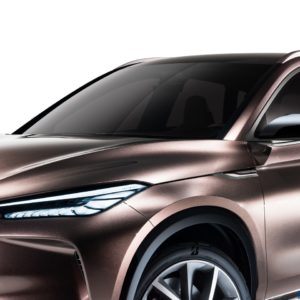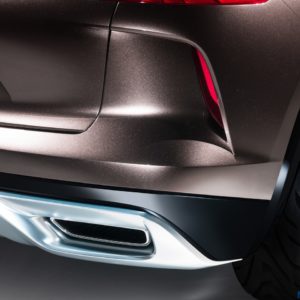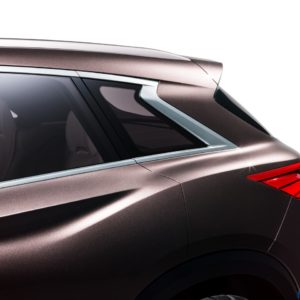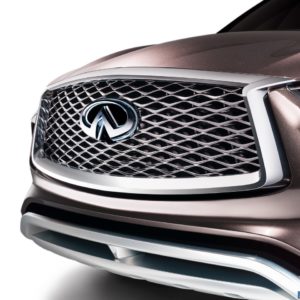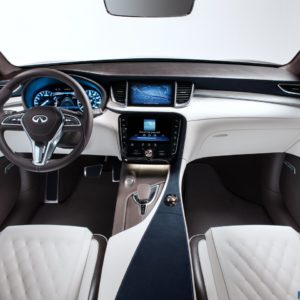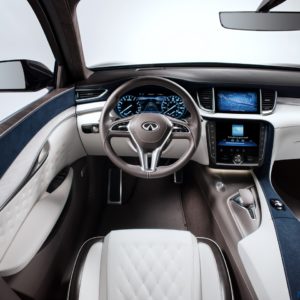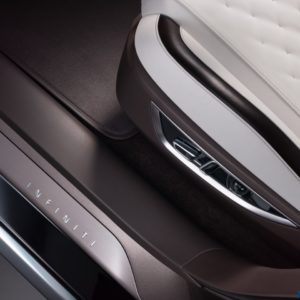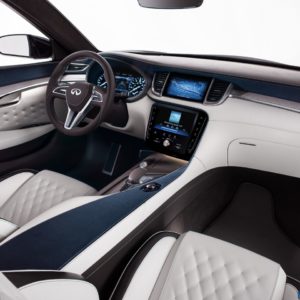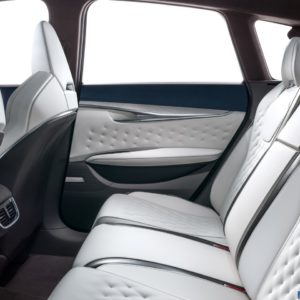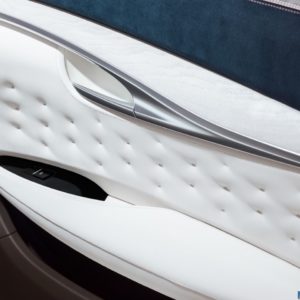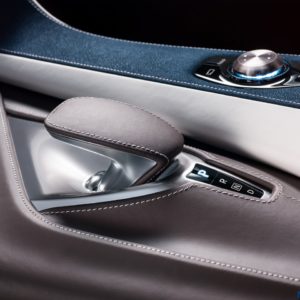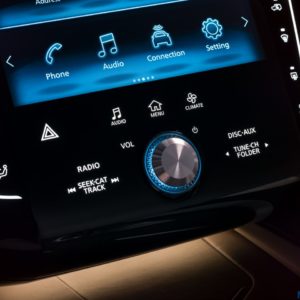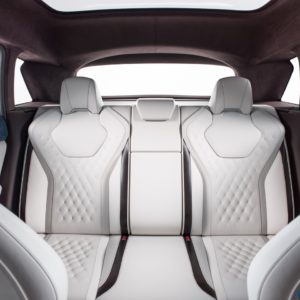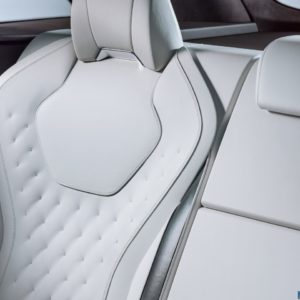Making its global premiere at the 2017 North American International Auto Show in Detroit, the QX50 Concept showcases Infiniti’s vision for a next-generation mid-size premium SUV.
Infiniti QX50 Exterior Design
The QX50 Concept represents the latest interpretation of Infiniti’s ‘Powerful Elegance’ design language. The exterior of the concept combines taut and muscular lines with flowing, heavily profiled surfaces.
Design highlights include a sharp, straight character line that runs from the clamshell hood and along the length of its shoulders, Infiniti’s double-arch grille, a high-set crescent-cut D-pillar, a ‘cabin-forward’ silhouette, and a slightly more vertical rear hatch; all swathed in a newly-created Forged Bronze paint finish.
Infiniti QX50 Interior
The QX50 Concept’s cabin “demonstrates new direction of thinking with premium materials and craftsmanship.”
It’s claimed to be both driver-centric and passenger-minded, with similar importance given on both form and function.
In the place of high-gloss woods and soft-touch plastics, the interior of the QX50 Concept features a more modern application of wood, leather and stitching.
The QX50 Concept’s cabin is said to espouse a handmade feel and is the result of two Japanese approaches to craftsmanship – ‘mitate’ (pronounced “mee-ta-teh”) and ‘shitate’ (“shee-ta-teh”).
‘Mitate’ relates to the practice of curating and bringing together the best possible selection of materials. ‘Shitate’ is the desire to tailor the chosen combination of materials, bringing out the best.
The QX50 Concept is wrapped in a variety of different leathers – genuine, semi-aniline, and synthetic nubuck – while the cabin features a three-tone colour scheme.
Infiniti has applied for a patent for a new ‘dot quilting’ method for the leather that lines the doors and seats. Inspired by classic buttoned leather sofas, dot quilting is sewn into place at individual points.
As for the wood, the QX50 Concept is trimmed in real, open-pore ash. The wood is said to have been treated to retain its natural, and sometimes irregular, characteristics in texture and appearance.
The natural, flowing shapes of the cabin are in line with those of the QX50 Concept’s exterior. The layout of the QX50 Concept’s cabin is divided into distinct zones for the driver and passengers.
The seats feature an ergonomic hexagon motif, while promising maximum back and shoulder support for occupants.
While the cabin-forward design creates a longer, more spacious passenger compartment, the upright stance of the rear hatch – more vertical than its forebear – is designed to give the QX50 Concept more cargo space.
The QX50 Concept’s Graphic User Interface shows how new technologies could be incorporated into future Infiniti vehicle cabins.The centre of the dashboard features a wide touchscreen HMI (human-machine interface) that amongst other things, displays the status of the various Infiniti ‘co-pilot’ autonomous drive support technologies.
Infiniti QX50 ‘co-pilot’
With the QX50 Concept, Infiniti previews its autonomous driving support technologies that will act as a ‘co-pilot’ and ‘delegate’ more onerous driving tasks to the car – such as navigating stop-start traffic on the highway or keeping track of the positions of surrounding vehicles.
That said, drivers will still retain ultimate control over their vehicle, as Infiniti autonomous drive support technologies remains a step removed from full autonomy.
Driver-assistive technologies on board the new QX50 Concept include Predictive Forward Collision Warning, drive-by-wire Direct Adaptive Steering and Active Lane Control.
Infiniti QX50 VC-Turbo Engine – the world’s first production-ready variable compression ratio engine
The QX50 Concept suggests a potential application for Infiniti’s VC (Variable Compression)-Turbo engine. Infiniti claims a 27% improvement in fuel efficiency compared to V6 gasoline engines
The 2.0-litre VC-Turbo engine is able to adapt its compression ratio according to driving conditions to deliver optimal levels of performance and efficiency.
For its application in the QX50 Concept, the HMI (human-machine interface) demonstrates to the driver and passengers how the VC-Turbo is adapting according to driving conditions.
The HMI displays the engine’s current status as it intelligently chooses appropriate levels of performance and high efficiency.
The 2.0-litre VC-Turbo engine boasts an “impressive specific power output that’s higher than many competing four-cylinder turbocharged gasoline engines, and close to the performance of some V6 gasoline powertrains”.

